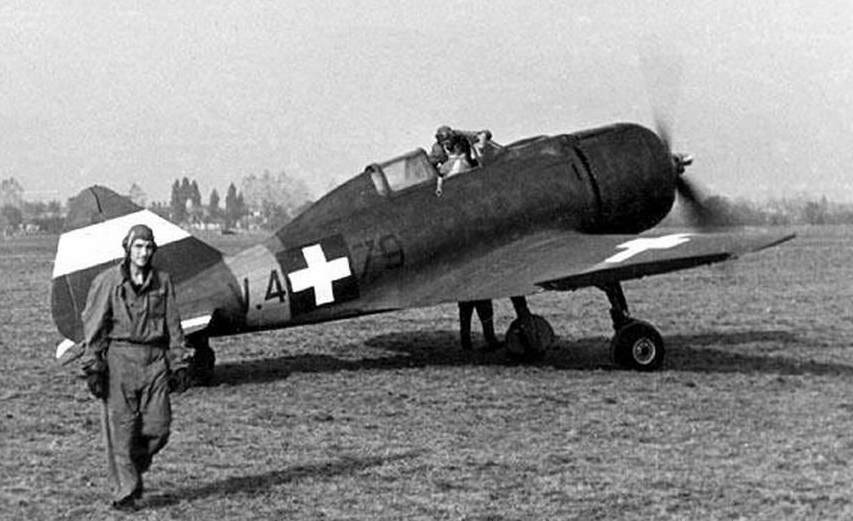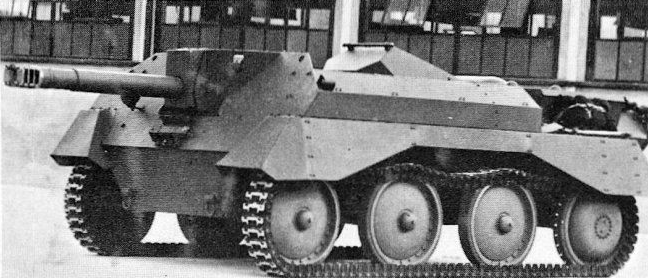Fortress of the Skies: The 40M Nimrod - Hungary's Anti-Aircraft Sentinel
- kismber

- Sep 9, 2023
- 3 min read
Updated: Dec 29, 2023
In the records of military history, some weapons and vehicles stand as symbols of ingenuity and determination. Today, we journey into the past to explore the 40M Nimrod, a Hungarian anti-aircraft vehicle that despite its modest numbers, played a pivotal role. This is the story of how the Nimrod became a fortress in the skies and its lasting impact.

Our tale begins in the early 1930s, as Hungary, seeking to bolster its air defenses, embarked on the development of the 40M Nimrod. This self-propelled anti-aircraft gun was a remarkable engineering feat, with a 40mm Bofors gun mounted on a nimble chassis. The vehicle was a licensed version of the Swedish Landsverk L-62 Anti I SPAAG but with a new turret that was developed and modified to house one more crew member from the original 5 of the L-62. The crew of the 40M Nimród consisted of six men: commander, driver, two loaders and two gunners.
The vehicle's armament consisted of a Hungarian license-built Bofors 40 mm L60 gun, in Hungarian service designated as 40 mm 36M (model of 1936), a gravity fed gun which had a rate of fire of 120 to 140 rounds per minute depending on the firing angle, which fired conventional ammunition at a muzzle velocity of almost 900 metres per second or 3,000 feet per second. Ammunition for the gun consisted primarily of conventional high-explosive fragmentation and armor-piercing rounds, but also a specialized anti-tank round developed indigenously in Hungary. Hungarian armor-piercing ammunition for the gun could penetrate 46 mm (1.8 inches) of rolled homogeneous armor at a range of 100 m and 30 mm at 1,000 m. The Nimrod carried 640 rounds, split into 4 stowages of 160 rounds each.

Late in the war, the vehicle was issued with a 150 mm muzzle loaded rifle grenade to try to mitigate the threat of soviet armored vehicles of the eastern front
One of the Nimrod's key strengths was its versatility. While primarily an anti-aircraft vehicle, it could also engage ground targets, serving as a dual-threat force. Its adaptability made it a valuable asset in various combat scenarios.
As World War II engulfed Europe, the Nimrod entered the fray. It played a crucial role in the defence of Budapest during the war, thwarting aerial attacks and deterring enemy reconnaissance missions. Its presence instilled confidence in Hungarian forces. The Nimrod was designed to accompany the tank divisions and provide them with protection from enemy aircraft, as well as to engage enemy infantry and light vehicles on the ground. The vehicle saw extensive action on the eastern front, where it faced fierce resistance from Soviet forces.
Despite its effectiveness, the Nimrod faced numerous challenges. Limited production numbers and resource shortages hampered its deployment. Yet, the vehicle's tenacity and the skill of its crews allowed it to achieve remarkable victories against overwhelming odds.
When World War II ended, Hungary, like many nations, found itself in a new geopolitical landscape. The Nimrod's legacy endured as it was adapted for a short post-war service. Its design elements influenced some future anti-aircraft systems, leaving an indelible mark on military technology.
The 40M Nimrod may have been modest in number, but its impact was immeasurable. It was a testament to Hungarian engineering and determination, proving that even a small nation could develop a formidable anti-aircraft system. Its legacy, though often overlooked, lives on as a symbol of ingenuity in the face of adversity.




